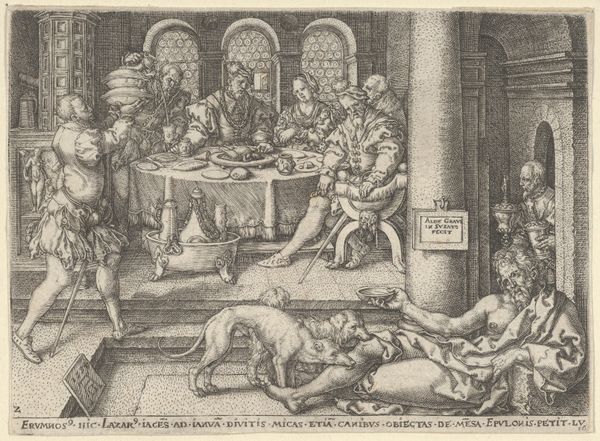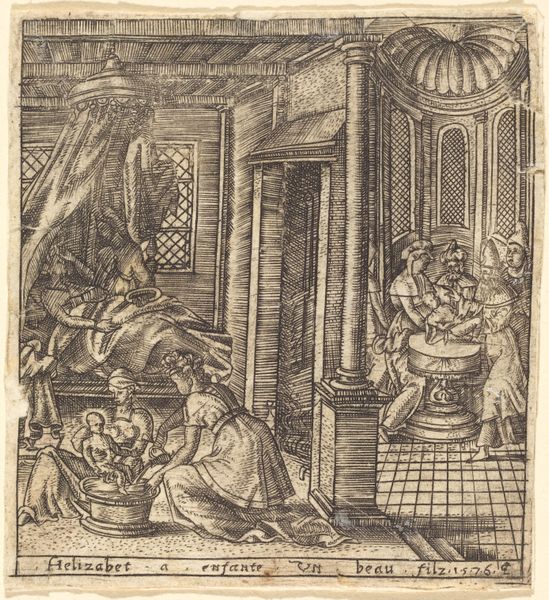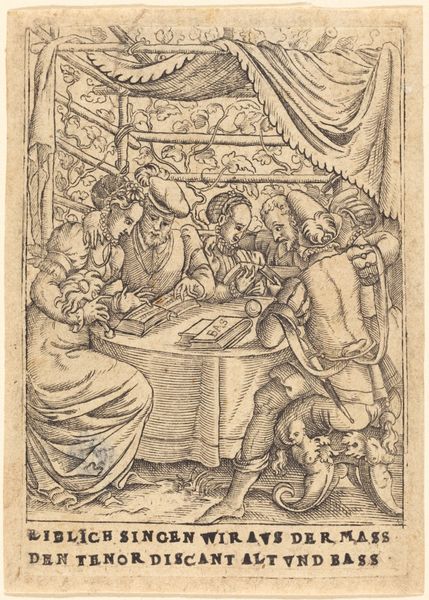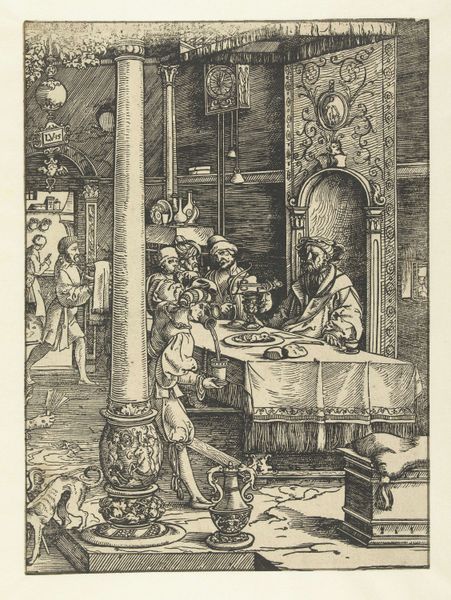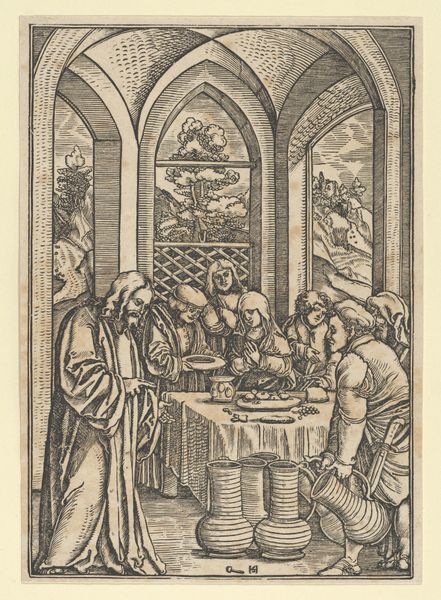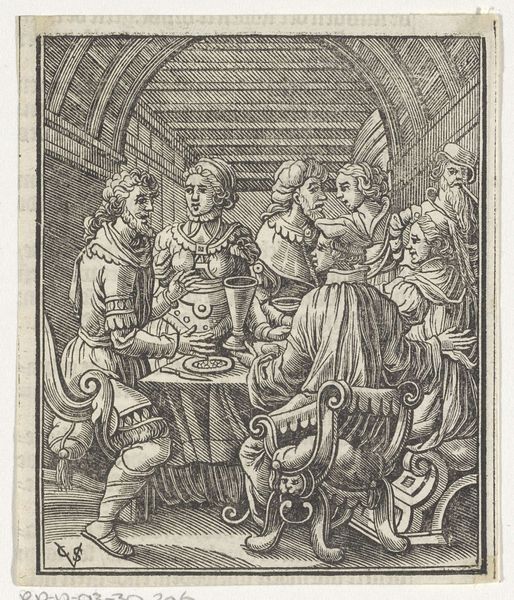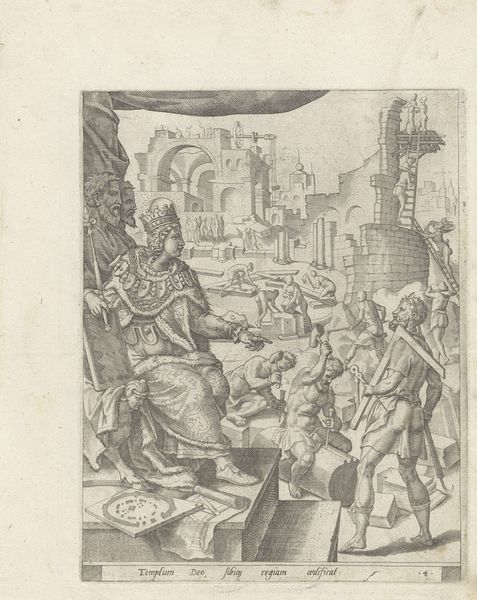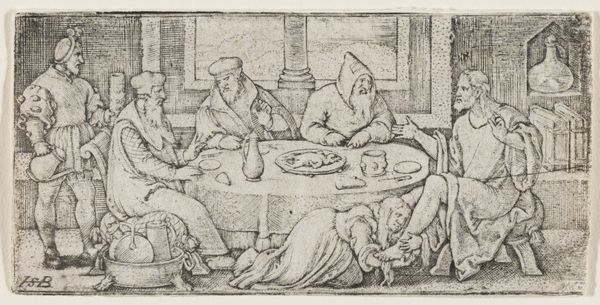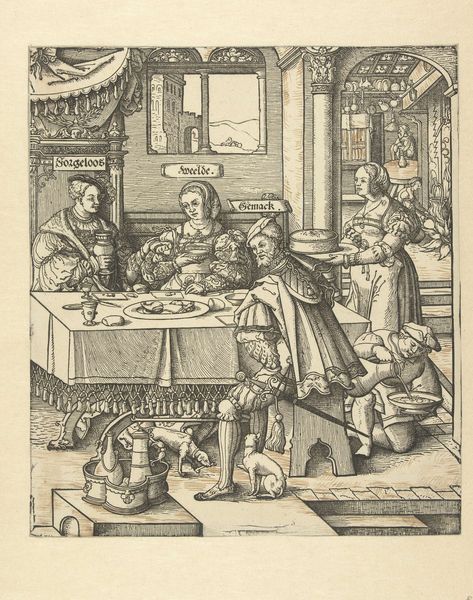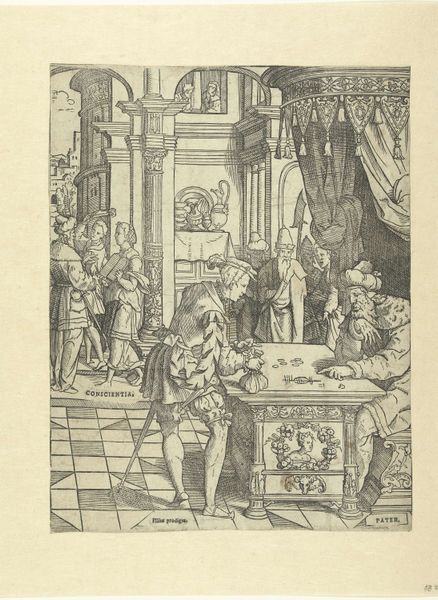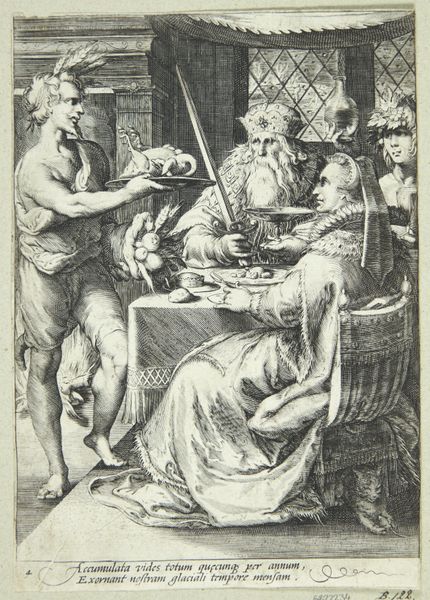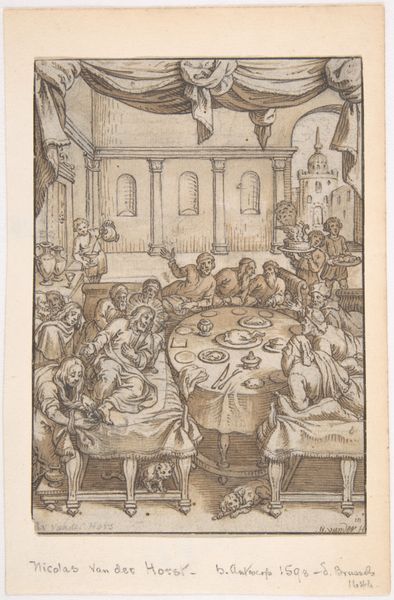
print, engraving
#
narrative-art
# print
#
figuration
#
line
#
history-painting
#
northern-renaissance
#
engraving
Dimensions: height 270 mm, width 212 mm
Copyright: Rijks Museum: Open Domain
Curator: Here at the Rijksmuseum, we’re looking at Cornelis Anthonisz.’s engraving, "The Prodigal Son Squandering His Inheritance," created sometime between 1535 and 1545. My first impression is one of moralizing chaos! The figures are packed together, and there’s an overall sense of unease and debauchery. Editor: Precisely! The composition, so meticulously rendered through line engraving, points directly to the wasteful culture displayed here. Note the table laden with food, the fashionable clothing, and even musical instruments—all products requiring considerable material resources and labor. Curator: Absolutely. And observe how those specific items are arranged – like the instruments behind them personifying Ratio. Look at how the artist uses classical imagery here: We see figures literally under the table, representing "Confusio." I believe they serve as allegorical embodiments of different levels of folly and recklessness. Even the monster floating up top. Editor: Right, cultural memory in practice, the "everyman" struggling with virtue and vice is a popular theme, but considering this was a print— likely multiple impressions were made for relatively widespread distribution. This fact changes how we understand the image's power; it moves from being simply art to becoming a commodity, reflecting a growing market for such moral tales and engaging wider society. Curator: It also underlines a shared understanding of its symbols. Without that, the narrative loses much of its impact. I think this shows how deeply rooted specific iconographic traditions are in collective culture. To that point: look at the names labeled for each character in the print: curios, Venatio, Luxuria, Ratio... each one represents a clear path on which you could lose yourself. Editor: True, yet the means of its production can not be overlooked. Each impression carries the trace of labor, from the engraver’s skill to the materials used, circulating hand-to-hand with cultural relevance attached. Curator: Well, whether a symptom of societal woes, or merely a representation of an "immoral descent," I think the work stands as a reminder of the narratives societies construct, share and warn themselves with, still resonating today through image and text. Editor: Indeed, by attending to both the symbolism and production of "The Prodigal Son," we gain a richer understanding of its enduring influence.
Comments
No comments
Be the first to comment and join the conversation on the ultimate creative platform.
